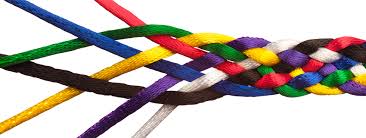ML2 – Second Language Literacies
A blog for the Second Language Literacies course from the MA in Learning and Teaching Processes in Second Languages (ML2) at UPB-Medellín
Reflecting on multiliteracy through a multimodal lens.
This video is a reflection on “Multiliteracies” within our school atmosphere, through the use of the different modes that the term multimodality encompasses.
By: Robinson Córdoba – Jesús Vallejo – Elmer Cordoba
References
Ajayi, L. (2015). Critical Multimodal Literacy How Nigerian Female Students Critique Texts and Reconstruct Unequal Social Structures. Journal of Literacy Research, 1086296X15618478
Boche, B. (2014). Multiliteracies in the classroom: Emerging conceptions of first-year teachers. Journal of Language and Literacy Education [Online], 10(1), 114-135. Retrieved from http://jolle.coe.uga.edu.
Cope, B., & Kalantzis, M. New London Group.(2000). Multiliteracies: Literacy learning and the design of social futures.
Freire, P. (1970). Pedagogy of the oppressed. New York: Seabury.
Kress, G. (2009). Multimodality: A social semiotic approach to contemporary communication. Routledge.
Mills, K. A. (2009). Multiliteracies: Interrogating competing discourses. Language and Education, 23(2), 103-116
Mora Velez, R. A. (2010). An analysis of the literacy beliefs and practices of faculty and graduates from a preservice English teacher education program (Doctoral dissertation, University of Illinois at Urbana-Champaign).Retrieved from: https://www.ideals.illinois.edu/handle/2142/16829
Mora, R. A. (2014). Critical literacy as policy and advocacy. Journal of Adolescent & Adult Literacy, 58(1), 16-18.
O’Byrne, W. I. (2014). Empowering learners in the reader/writer nature of the digital informational space. Journal of Adolescent & Adult Literacy, 58(2), 102-104.
The New London Group. (1996). A pedagogy of multiliteracies: Designing social futures. Harvard educational review, 66(1), 60-93.

Hey guys: What a nice video!! It’s really interesting to see how you develop literate practices with your students, using the available resources at your schools. To me, your are a model of creativity, innovation. You have made me realize that even though the use of technology is pivotal in today’s world, it is not the exclusive mean to approach multimodality.
By Catalina Gómez
Thanks guys for your video, I want stand out the part when you share the experience of teaching English in rural area, and it is because I teach in rural area too. As Catalina says “technology is not the exclusive mean to approach multimodality.” It is a real issue in rural area where there are lack of materials and resources, and lack of internet in many schools. It means that we as English teachers need to be creative and recursive in order to engage students to learn English in different modes and help them to use available resources to express feelings, knowledge and culture.
LEYDY CASTAÑO.
Dear classmates,
I really appreciate your comments about the video.
All we well know that we live immersed in the expansion of a new technology era. Blogs, webs, wikis, apps, have become new means of communication where people can get information, share knowledge or voice an opinion. Despite this undeniable reality, we can still find teachers reluctant to draw on these burgeoning resources, rejecting any type of activity that involves the use of new technologies.
New communication practices have emerged relentlessly, influencing significantly the approach of literacy and giving teachers the opportunity to face texts with a wider range of resources. Obviously, teachers should provide opportunities for engagement in multimodal texts, though that does not mean to draw upon these new trendy resources at whatever cost. Kress and Jewitt (2003) hold that the effective use of technology in education requires teachers to understand the content of their discipline, effective ways of teaching, and the affordances and limitations of a given technology.
With this in mind, I think that the incorporation of new technologies into the class cannot be an imposition from a superior sphere or a trendy issue that teachers learns in a matter of days. On the contrary, it should be assumed as a firm belief that we count on the help of other resources that lead our students to become critical readers, attempting to move them from consumers to producers in the digital informational space (O ’ Byrne, 2014)